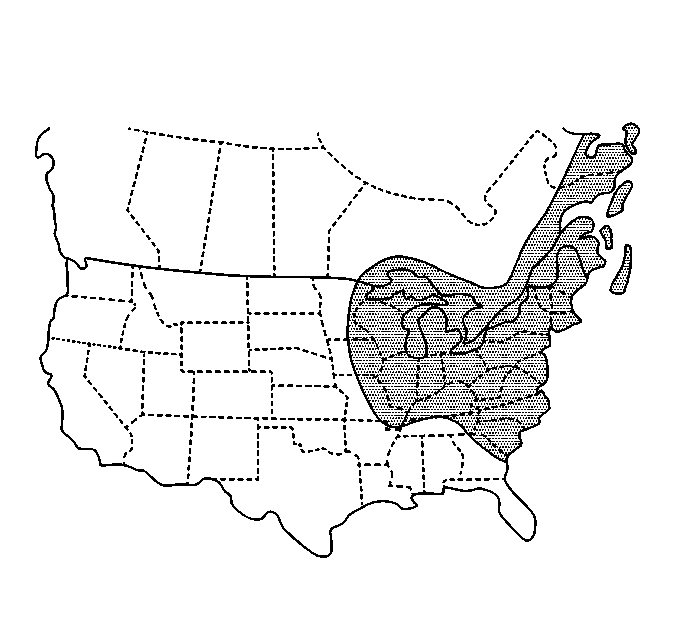Steering, Suspension and Front Drive Axle Boot and Seal Inspection
Inspect the front and the rear suspension for the following:
| • | Signs of wear or lack of lubrication |
Inspect the power steering lines and the hoses for the following:
Exhaust System Inspection
Inspect the complete system. Inspect the body near the exhaust system. Look for broken, damaged, missing or out-of-position parts as well as open seams, holes, loose connections or other conditions which could cause a heat build-up in the floor pan or could let exhaust fumes into the vehicle.
Fuel System Inspection
Inspect the complete fuel system for damage or leaks.
Engine Cooling System Inspection
Inspect the hoses and replace if they are:
Inspect all fittings and clamps and replace as needed.
Clean the outside of the radiator and air conditioning condenser. To help ensure proper operation, a pressure test of the cooling system and pressure cap is recommended at least once a year.
If there is a loss of coolant, refer to
Loss of Coolant
in Engine Cooling.
Throttle System Inspection
Throttle system including the accelerator and cruise control should operate freely without hesitation between full closed and wide open throttle.
Important: The accelerator and cruise control cables should not be lubricated under any condition. Throttle system components causing hesitation or sticking should be replaced.
Inspect the following:
| • | Missing parts such as retainers or clips |
| • | Interference of the linkage or the cable conduit to critical components such as fuel lines, brake lines, harness leads, etc. |
| • | Proximity of the cable to the exhaust system and other heat sources, check for melting and/or discoloration |
| • | Cable kinking, avoid sharp bends of cables |
| • | Clearance of the throttle system moving parts throughout their travel from other stationary components |
| • | Damage of the components due to cable kinking, severe kinking, severe abrasion, misalignment, etc. If any of the above conditions exists, notify your dealer for a recommended rerouting, adjustment, or replacement |
Brake System Inspection
Inspect the complete system.
Notice: A low brake fluid level can indicate worn disc brake pads which may need to
be serviced. Also, if the brake system warning light stays on or comes on, something
may be wrong with the brake system. If the anti-lock brake system warning light stays
on or comes on, something may be wrong with the anti-lock brake system.
Inspect the brake lines and the hoses for the following:
Inspect the disc brake pads for wear. Inspect the rotors for surface condition. Inspect other brake parts, including the calipers, the parking brake, etc.
The brakes may need to be inspected more often if driving habits or conditions result in frequent braking.
Caliper/Knuckle Maintenance Inspection

If the vehicle is operated in a highly corrosive environment, the vehicle may require additional brake service. As necessary, caliper pins and knuckle brake pad abutments should be lubricated at every other tire rotation. Refer to
Disc Brake Mounting and Hardware Inspection
in Disc Brakes.

